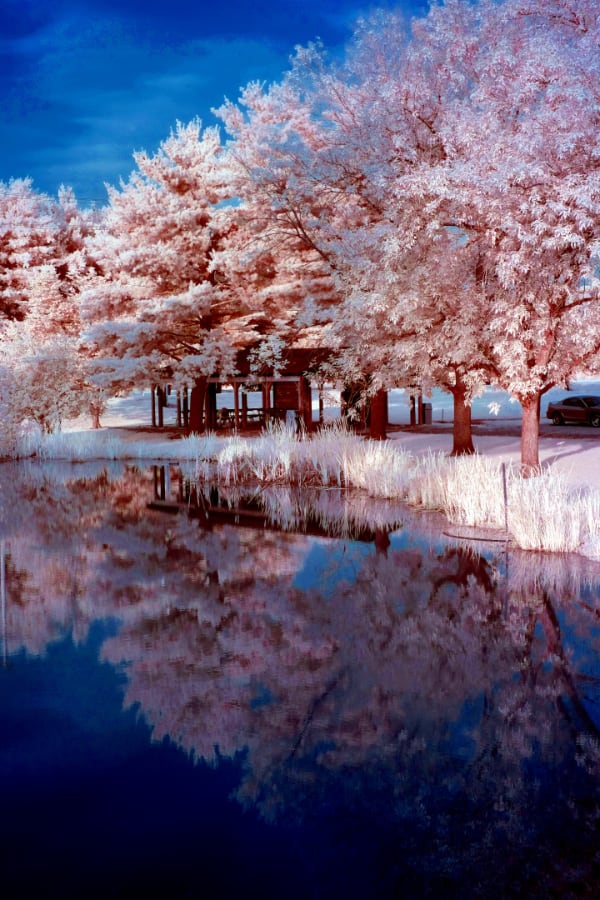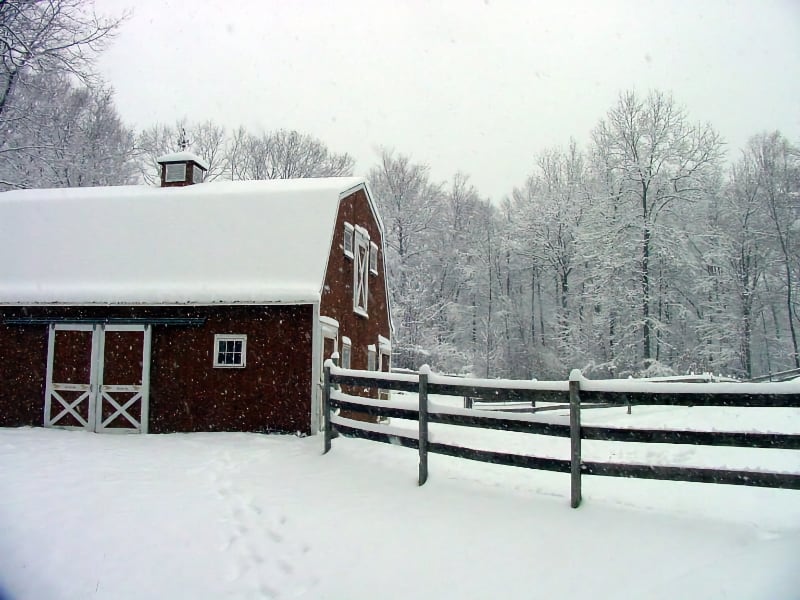
We were early into the new millennium and it was time to think about making pictures digitally.
Photography was nothing new to me. I took my first published news picture when I was in third grade, and was getting regularly published by the time I turned 13, the year I started winning photography awards. This isn’t to brag — most people were shooting their Instamatics, while I had been given a Yashica A twin-lens camera for Christmas when I was eight years old. So I had some experience.
But this digital business was something else. The measurements and standards involved were all mysteries. While some things, such as ASA (no, dammit, I will not call it “ISO”), shutter speed, and aperture made the trip from film to electronic sensor, some others did not. “Megapixels,” for instance. I confess that they remain a mystery to some extent. In due course we were told that a standard print figures out to be 300 dots per inch, so a one-inch-by-one-inch picture would require 90,000 pixels. That meant that to make an acceptable 8x10 you’d need 7,200,000 pixels. That is seven megapixels and change.
But wait! The $5,000 Nikon D-1 digital single-lens reflex camera, the professional standard of the day employed by magazine photographers around the world whose publications could afford it, had only a 2.7-megapixel sensor, and they were printing pictures a lot bigger than 30 square inches, or 5x6. I could tell you all about film grain, but this pixel business made no sense.
There were other problems, some of which still defy rational explanation. The size of the sensor in a camera, for instance, is in practically every case a bigger lie than the claims for the size of digital televisions and monitors. I’ll not try to give the excuse the manufacturers make, but if you poke around you’ll inevitably conclude, as I did, that the measurement was formulated with an intent to deceive.

And it matters. Without diving too deeply into the rabbit hole, the relationship between the size of the sensor and the focal length of the lens is significant. Additionally, the smaller the sensor, the smaller the amount of light it can use in making pictures. And it’s related, too, to megapixels, in that if you cram a lot of pixels into a tiny space, while the pixel count will be high the effectiveness of each pixel is correspondingly diminished. (This why those who think there’s value in a telephone’s 50-megapixel sensor smaller than the nail on your little finger are at best misinformed.)
This was all hard to figure out, but fortunately we had Digital Photography Review. In those relatively early days of the WorldWide Web there were numerous photographic websites, as there are today, but none was as reliable as Digital Photography Review. Begun in England in 1998, it was a site that explained things — not always in a readily understood way, which could have been their fault or mine — and, most important, it was consistent. You could make comparisons. They performed standardized tests, so it was easy to see which among the then-very-expensive digital cameras were worth buying.

(The site also had a vigorous reader forum. While it regularly fell victim to the kind of nastiness that has always threatened to take over the online world, there were. too, people of good will, some of whom also had knowledge. I remember when I got interested in making infrared pictures with a digital camera. I asked, and within hours I had good advice from helpful photographers and within a day or two I had made decent infrared digital pictures. So while the forum was sometimes the internet at its worst, it was also sometimes the internet at its best.)
When in 2001 I thought it would be good to dip my toes into digital photography, and having concluded that Nikon would never make a digital back for my beloved Nikon Fs (which I still have), I turned to Digital Photography Review for advice.
In due course and after much study, and with the Key West wedding of my then-sister-in-law coming, I hopped over to Circuit City and plopped down embarrassingly close to $1,000 (plus another $100 for many boxes of 3.5-inch floppy disks — yes, floppy disks) for a Sony Mavica FD-95. (I still have it, too, as witness the picture above, made yesterday with a Nikon D-500.)
This wonder didn’t make me use all kinds of weird memory cards or sticks. No, it had a built-in floppy drive that wrote to ordinary, ubiquitous 3.5-inch floppies. It would make pictures in my choice of three qualities, the finest being 1600x1200 pixels. (Remember, at that time a high-resolution monitor displayed 1024x768 pixels.) Four — you read that correctly — of the highest-resolution pictures would fill a floppy disk. So to cover a wedding or horse show or something, I’d need to carry a gadget bag full of floppy disks, the way that in an earlier day photographers would carry a bag full of flashbulbs.
But y’know what? I loved it. As you can see here, in the pictures of the snow-swept barn and the oh-so-kawaii fawn, it was a more than decent photographic machine, especially for its day.

Digital Photography Review was reliable enough that I was willing to spend more than $1,000 on the strength of its advice.
A week from now, Digital Photography Review will be no more. And I’m joined by much of the world’s photographic community in being well and truly angry about it.
DPReview, as it is commonly known, got bought by Amazon in 2007. It remained mostly good; despite a newfound interest in cheap plastic accessories and other junk sold by Amazon.com in its continuing effort to make sure Chinese slave laborers and children have something to do, Digital Photography Review maintained its excellent coverage of stuff important to actual photographers, too.
Last month it was announced that “. . . DPReview will be closing in the near future. This difficult decision is part of the annual operating plan review that our parent company shared earlier this year.” The “near future,” it turns out, is April 10, next Monday.
That’s awful, but it gets worse: “The site will be locked, with no further updates made after April 10th 2023. The site will be available in read-only mode for a limited period afterwards.” After which it will apparently be nuked. A quarter century history of the early days of digital photography and related topics, poof, gone.
Let’s see. Amazon customers spent $500 million just this year to buy Jeff Bezos a new pleasure boat. A few years ago they spent more than $35 billion to buy him a new woman. A decade ago they spent $250 million to buy him The Washington Post. Yet he cannot find it in his billfold (I’d say heart, but that assumes a fact not in evidence: that he has one) to continue a site of importance to literally hundreds of thousands of readers, most of whom do — did, I hope, past-tense — business with Amazon.
It isn’t the first time someone has swooped in, bought up a thriving and happy photography site, and wrecked it for little or no reason. In 2005, the popular and excellent photo-hosting site Flickr got bought by Yahoo. That company, already in a decline, accelerated the downward velocity through the hiring of ex-Googler Marissa Mayer as its CEO in 2012. It wasn’t long before Flickr users logged on and discovered that the entire site had been redesigned, with individual users’ albums in total disarray, without announcement or so much as a by-your-leave. Many — I was among them — were outraged and enraged. We complained. We were told to pound sand. A lot of us went elsewhere — there were even applications made available to smoothe the move. In 2017, Mayer was paid a lot to go away, but Flickr never again was the respected site for serious photographers it once had been. Yahoo got bought by a cellular telephone company, who in turn unloaded Flickr, probably at a loss — the amount was not disclosed, but speculation at the time had it that it was less than Mayer’s $23 million severance. (I cannot confirm this.)
It seems to me that you can’t build or sustain a business by effectively announcing to your customers that you do not give a damn about them. There are many things Amazon could have done. They include announcing that they would keep DPReview going despite the fact it was losing money, which would have endeared the company to photographers and caused them to spend more money on products from Amazon. They could have established a foundation and handed DPReview over to it in much the way some fairly miserable companies have gained good will (and tax breaks) by undertaking a little community philanthropy. They could have announced that though they couldn’t afford — though no one would believe this — to keep DPReview growing, they would continue to maintain the site’s 25-year archive. They could have sold it or even given it away. But they did none of those things.
In the past I’ve done considerable business with Amazon. No more. I’d rather pay a little more to get products from a reputable company than save a little, at a cost to my immortal soul, by dealing with a company that is not just worthy of my contempt but actively campaigning for it.
Digital Photography Review will be remembered warmly and with gratitude. Around here, Amazon will be forgotten but not gone. 

Dennis E. Powell is crackpot-at-large at Open for Business. Powell was a reporter in New York and elsewhere before moving to Ohio, where he has (mostly) recovered. You can reach him at dep@drippingwithirony.com.
You need to be logged in if you wish to comment on this article. Sign in or sign up here.
Join the Conversation
Re: Up the Amazon Without a Paddle
This column reminds me of so many good memories. My first few digital cameras were Sonys. I’d wanted to get a Mavica, although started with a Cybershot instead.
When it was time to go with a DSLR, I spent a long time pouring over DPReview’s guides to the offerings of Canon, Nikon, Pentax, Sony and others to figure out what on earth to get. I was pleased with where it led me on that purchase and subsequent purchases, too. I’m sure going to miss that resource.